

 Copyright 2003 by Julie Grist
Copyright 2003 by Julie Grist
All rights reserved including the right of reproduction
in whole or in part in any form.
First paperback edition 2006  Spoonbender Books
Spoonbender Books
419 N. Larchmonl Blvd.. #4
Los Angeles, CA 90004
www.spoonbenderbooks.com  Publisher's Cataloging-in-Publication
Publisher's Cataloging-in-Publication
(Provided by Quality Books, Inc.) Grist, Julie. Flying : Just Plane Fun / written and illustrated by Julie Grist. -- 1st paperback ed. cm. cm.
SUMMARY: A young boy flies in his grandfather's home-built biplane over the Wisconsin countryside in this introduction to the basics of aviation and the joy of being airborne. Audience: Ages 5-12. LCCN 2002095012 ISBN 0-9725750-2-2 1. Flight-Juvenile literature. 2. 3. 3.
Airplanes, Home-built-Juvenile literature. 4. Biplanes-Juvenile literature. 5. Grandparent and child-Juvenile literature. Flight. 2. 2.
Aeronautics. 3. Airplanes, Home-built. 4. 8iplanes. 5.
Grandparents.] I. Title. TL547.G75 2003 629.13 QB133-996 -Printed in China  Dear Flyboy, Congratulations on your first flight! This is a logbook of our day in the skies together over wisconisn. With a little more stick time, you could be a real fine flyer. Love, Gramps Roll Out
Dear Flyboy, Congratulations on your first flight! This is a logbook of our day in the skies together over wisconisn. With a little more stick time, you could be a real fine flyer. Love, Gramps Roll Out Lets roll my homebuilt airplane out of the hangar for inspection. If there is anything not working properly I want to find out while on the ground not in the air! Every pilot does a walk around of the plane before climbing abroad.
Lets roll my homebuilt airplane out of the hangar for inspection. If there is anything not working properly I want to find out while on the ground not in the air! Every pilot does a walk around of the plane before climbing abroad.
Find #1 and begin the preflight inspection.  On The Ramp Now its time to climb in and make some noise. Hoist yourself into the copilots seat. Buckle up the seat and shoulder belts. I dont want you to fall out!.
On The Ramp Now its time to climb in and make some noise. Hoist yourself into the copilots seat. Buckle up the seat and shoulder belts. I dont want you to fall out!.  We strap on intercom HEADSET RADIOS so we can talk to one another and the airport TOWER.
We strap on intercom HEADSET RADIOS so we can talk to one another and the airport TOWER.
I set our radio to 122.8, the aviation frequency.  Clear prop I call before firing up the engine to alert all to stand clear. The 180 horsepower four-banger roars to life. We taxi slowly across the ramp toward the runway. Holding short of runway three zero we run through our checklist.
Clear prop I call before firing up the engine to alert all to stand clear. The 180 horsepower four-banger roars to life. We taxi slowly across the ramp toward the runway. Holding short of runway three zero we run through our checklist.  Next we listen on the radio for other aircraft, announce our plans, and taxi onto the runway.
Next we listen on the radio for other aircraft, announce our plans, and taxi onto the runway.  Next we listen on the radio for other aircraft, announce our plans, and taxi onto the runway.
Next we listen on the radio for other aircraft, announce our plans, and taxi onto the runway.
TAKEOFF  I ease the throttle forward, the engine revs up, and the plane races ahead. My feet dance back and forth on the rudder pedals, keeping our nose pointed straight down the runway. At 90 miles per hour, I gently pull back on the stick and the wheels leave the ground.
I ease the throttle forward, the engine revs up, and the plane races ahead. My feet dance back and forth on the rudder pedals, keeping our nose pointed straight down the runway. At 90 miles per hour, I gently pull back on the stick and the wheels leave the ground.  AIRBORNE!
AIRBORNE!  Do you know how flight works? It has to do with four key elements: LIFT, WEIGHT, THRUST and DRAG. Lift is produced by air flowing over the curved surface of a wing. We need lift to overcome our WEIGHT.
Do you know how flight works? It has to do with four key elements: LIFT, WEIGHT, THRUST and DRAG. Lift is produced by air flowing over the curved surface of a wing. We need lift to overcome our WEIGHT.
The skybolt is packed with a heavy engine, fuel, seats, instruments, and a turtledeck compartment for extra stuff. Plus the weight of you and me and all the ice cream we ate yesterday!. We use the THRUST of the engine and propeller to overcome the DRAG of our big body mass moving through the air. 
 Lift
Lift  Air molecules passing over the curved top of the wing must travel a longer distance. They get spread apart and this creates lower pressure. Air molecules flowing on the under side of the wing take the easier straight route, staying shoulder-to-shoulder string.
Air molecules passing over the curved top of the wing must travel a longer distance. They get spread apart and this creates lower pressure. Air molecules flowing on the under side of the wing take the easier straight route, staying shoulder-to-shoulder string.
They push upward against the lower pressure of the weaklings above, and this provides the lift that keeps planes aloft. CONTROLS I use the STICK and RUDDER PEDALS to control the plane. The STICK operates two things: the AILERONS, which tip us into a turn, and the ELEVATORS, which lets us climb and dive. The PEDALS control the RUDDER which steers our nose in the direction we want to go. Hands and feet work in unison to fly the skybolt smooth and clean. 
 Navigation I love flying over the Wisconsin countryside.
Navigation I love flying over the Wisconsin countryside.
I know my way around just by looking down at the rivers, highways and barns that are so familiar. I fly these skies a lot. When were flying somewhere new, we have to use NAVIGATIONAL tools to figure out where we are and where were headed. First, we need to use a basic compass and learn to speak about direction in degrees. We say were headed southeast at 130 degrees instead of just saying heading south. Can you follow our flight route on the AERONAUTICAL CHART Ive clipped here?  FLY-IN Next we touch down for a fly-in breakfast at /munsil Williams farm near Omro.
FLY-IN Next we touch down for a fly-in breakfast at /munsil Williams farm near Omro.
I love landing on his 1500 foot grass strip nested in between Highway 44 and his silver hangar. Flyins take place at small airfields all across the country on summer days. Many of these guys built their own planes. We love to talk shop, compare horsepower, and tell flying tales. 
Next page

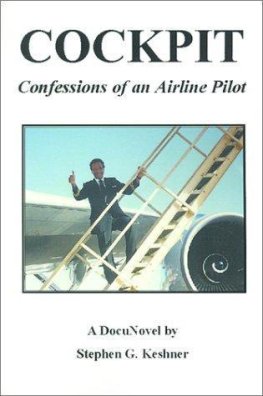
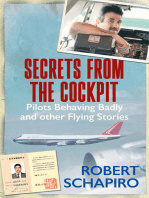
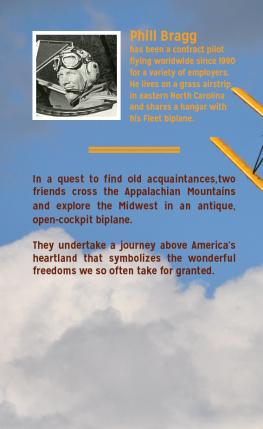
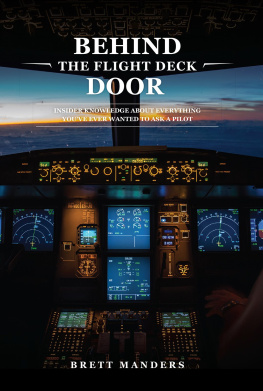



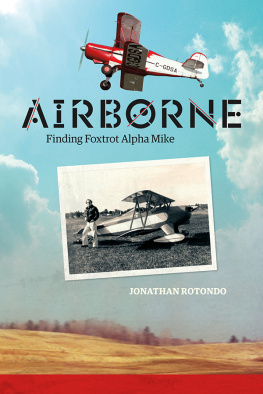
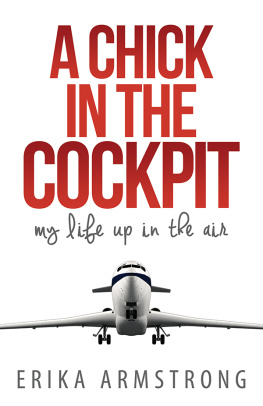



 Copyright 2003 by Julie Grist
Copyright 2003 by Julie Grist Spoonbender Books
Spoonbender Books Dear Flyboy, Congratulations on your first flight! This is a logbook of our day in the skies together over wisconisn. With a little more stick time, you could be a real fine flyer. Love, Gramps Roll Out
Dear Flyboy, Congratulations on your first flight! This is a logbook of our day in the skies together over wisconisn. With a little more stick time, you could be a real fine flyer. Love, Gramps Roll Out Lets roll my homebuilt airplane out of the hangar for inspection. If there is anything not working properly I want to find out while on the ground not in the air! Every pilot does a walk around of the plane before climbing abroad.
Lets roll my homebuilt airplane out of the hangar for inspection. If there is anything not working properly I want to find out while on the ground not in the air! Every pilot does a walk around of the plane before climbing abroad. On The Ramp Now its time to climb in and make some noise. Hoist yourself into the copilots seat. Buckle up the seat and shoulder belts. I dont want you to fall out!.
On The Ramp Now its time to climb in and make some noise. Hoist yourself into the copilots seat. Buckle up the seat and shoulder belts. I dont want you to fall out!.  We strap on intercom HEADSET RADIOS so we can talk to one another and the airport TOWER.
We strap on intercom HEADSET RADIOS so we can talk to one another and the airport TOWER. Clear prop I call before firing up the engine to alert all to stand clear. The 180 horsepower four-banger roars to life. We taxi slowly across the ramp toward the runway. Holding short of runway three zero we run through our checklist.
Clear prop I call before firing up the engine to alert all to stand clear. The 180 horsepower four-banger roars to life. We taxi slowly across the ramp toward the runway. Holding short of runway three zero we run through our checklist.  Next we listen on the radio for other aircraft, announce our plans, and taxi onto the runway.
Next we listen on the radio for other aircraft, announce our plans, and taxi onto the runway.  I ease the throttle forward, the engine revs up, and the plane races ahead. My feet dance back and forth on the rudder pedals, keeping our nose pointed straight down the runway. At 90 miles per hour, I gently pull back on the stick and the wheels leave the ground.
I ease the throttle forward, the engine revs up, and the plane races ahead. My feet dance back and forth on the rudder pedals, keeping our nose pointed straight down the runway. At 90 miles per hour, I gently pull back on the stick and the wheels leave the ground.  AIRBORNE!
AIRBORNE!  Do you know how flight works? It has to do with four key elements: LIFT, WEIGHT, THRUST and DRAG. Lift is produced by air flowing over the curved surface of a wing. We need lift to overcome our WEIGHT.
Do you know how flight works? It has to do with four key elements: LIFT, WEIGHT, THRUST and DRAG. Lift is produced by air flowing over the curved surface of a wing. We need lift to overcome our WEIGHT.
 Lift
Lift  Air molecules passing over the curved top of the wing must travel a longer distance. They get spread apart and this creates lower pressure. Air molecules flowing on the under side of the wing take the easier straight route, staying shoulder-to-shoulder string.
Air molecules passing over the curved top of the wing must travel a longer distance. They get spread apart and this creates lower pressure. Air molecules flowing on the under side of the wing take the easier straight route, staying shoulder-to-shoulder string.
 Navigation I love flying over the Wisconsin countryside.
Navigation I love flying over the Wisconsin countryside. FLY-IN Next we touch down for a fly-in breakfast at /munsil Williams farm near Omro.
FLY-IN Next we touch down for a fly-in breakfast at /munsil Williams farm near Omro.